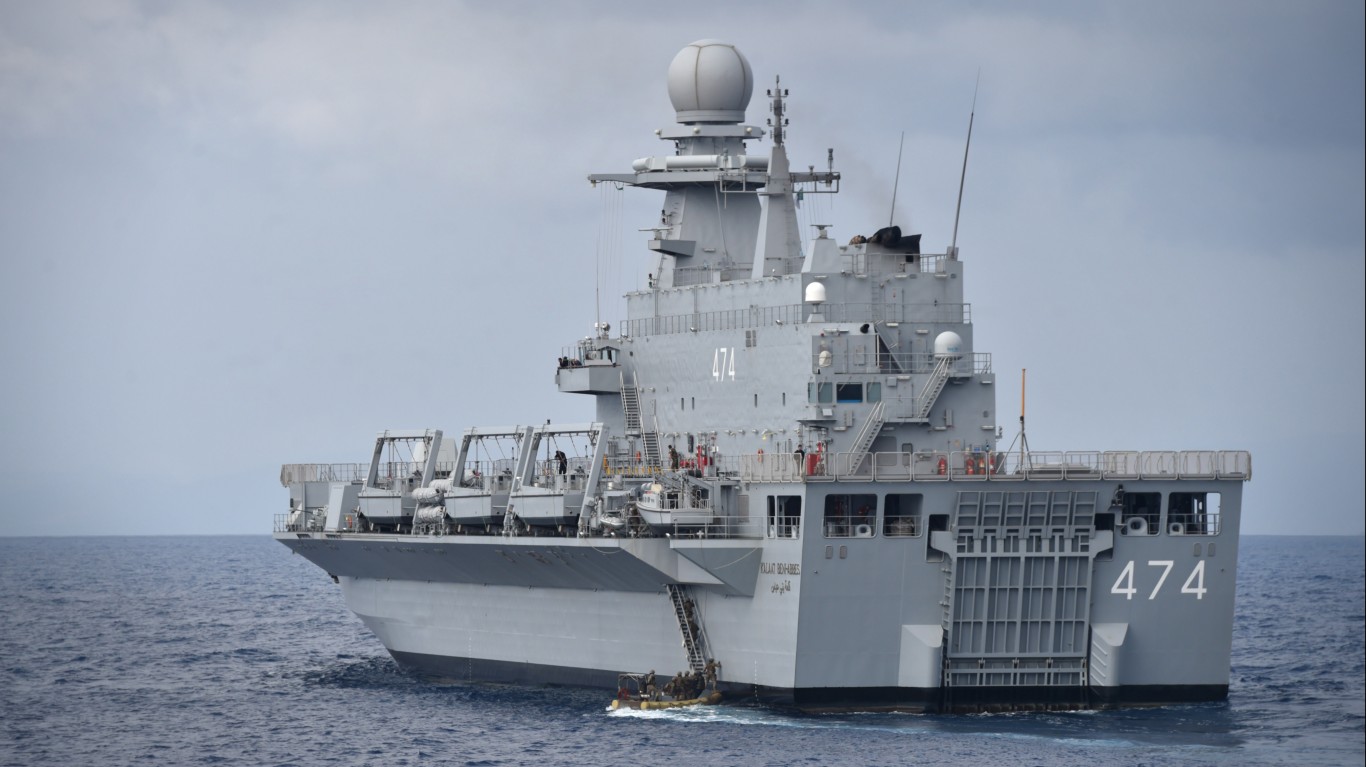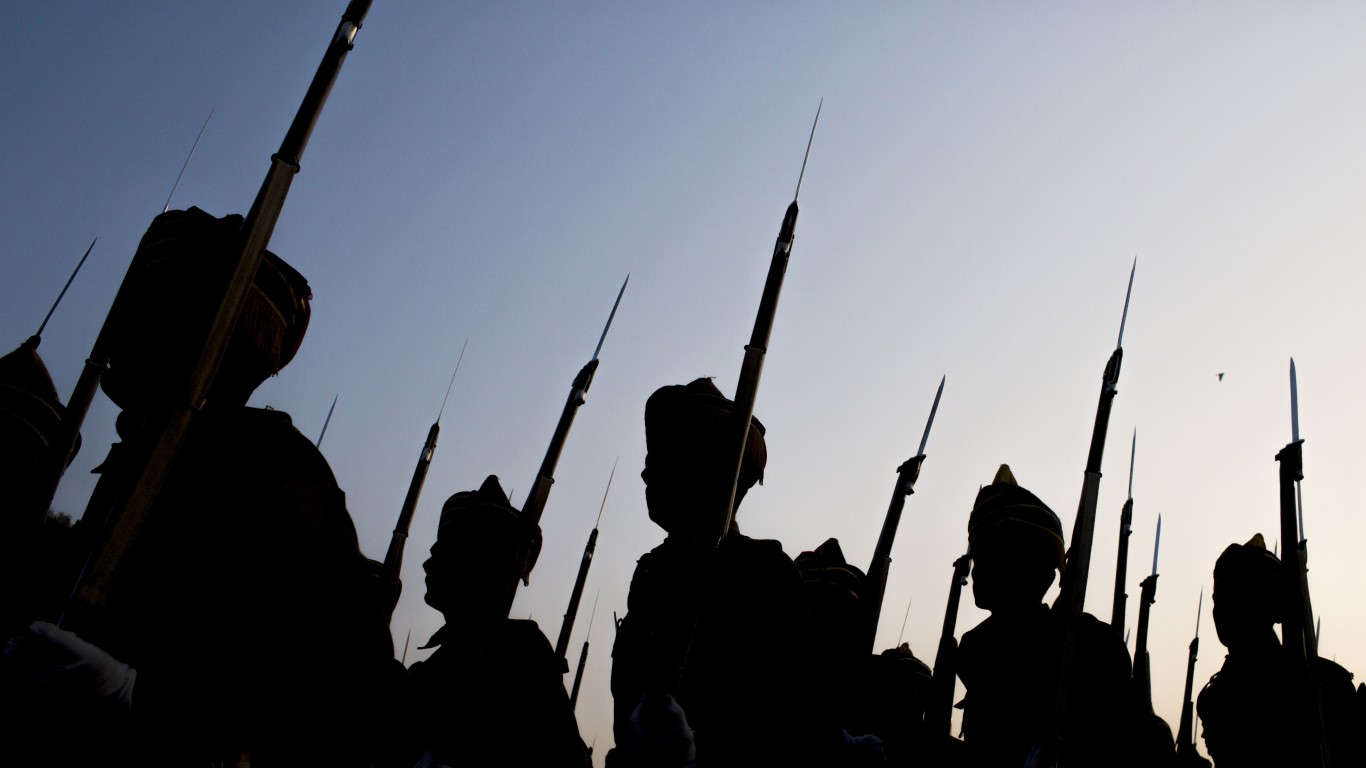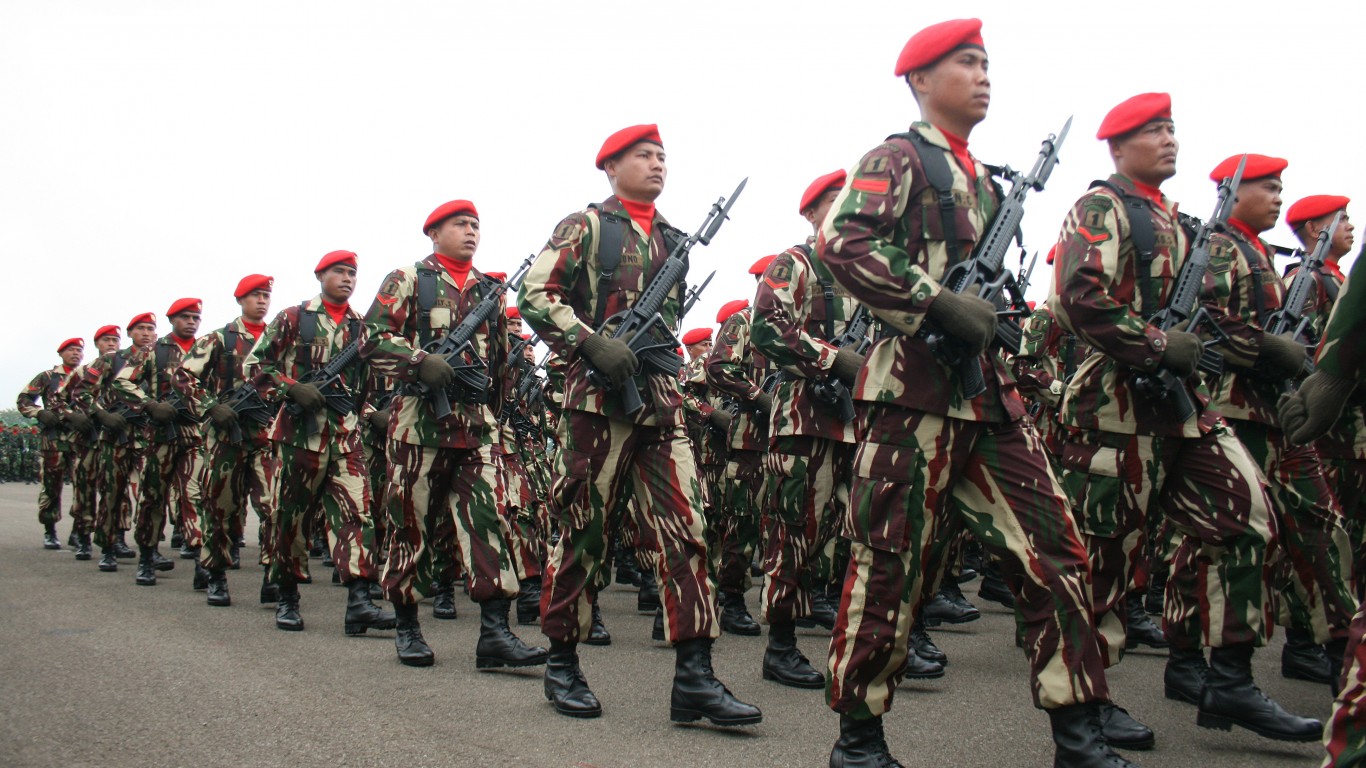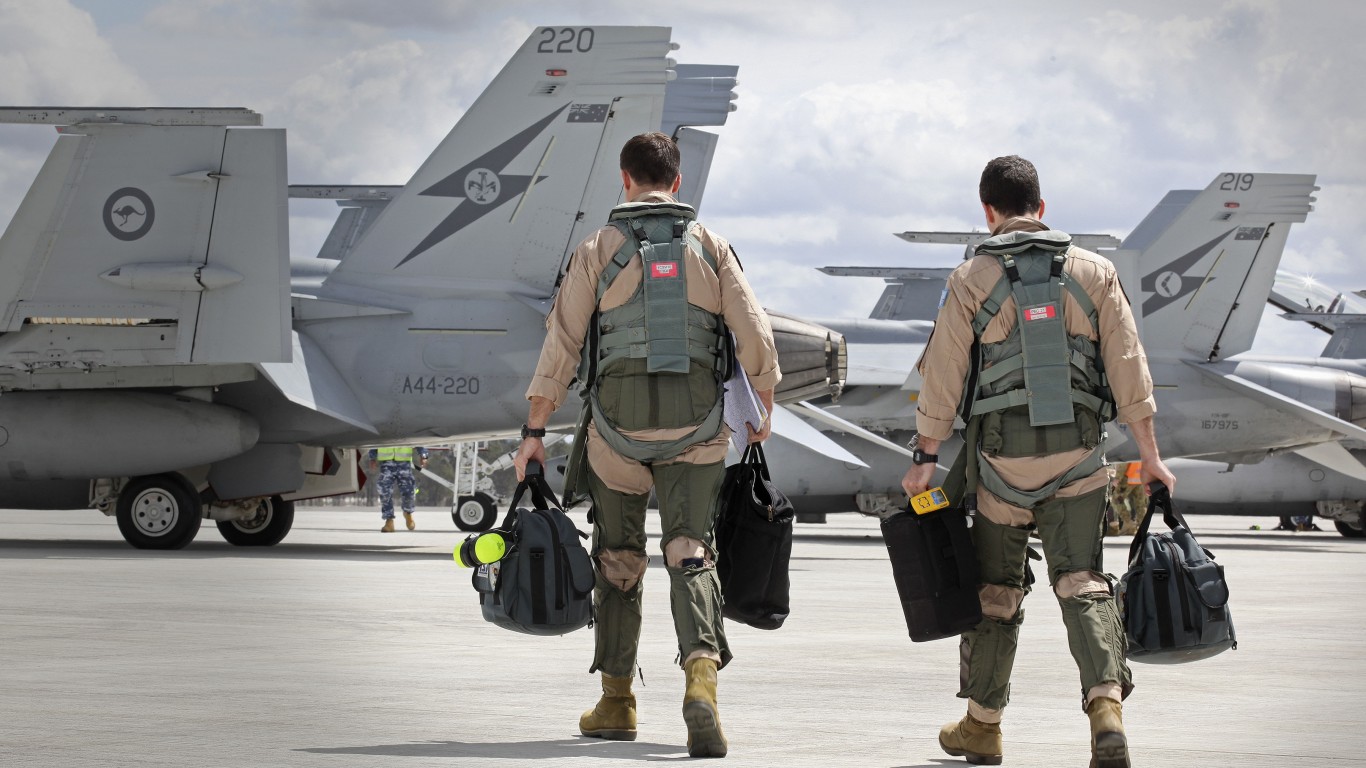
Military spending is rising globally. With ongoing conflicts in the Middle East and Eastern Europe, and heightening tensions in the Pacific, many nations are bolstering their defenses. For many years, the United States, China, and Russia were in a class of their own. However, other states have developed formidable militaries that don’t get the same level of attention. This article looks at those underrated armies in the world.
Why This Matters

American military hegemony has been taken for granted since the end of the Cold War. Yet the world is becoming increasingly non-aligned and new powers are rising. The United States still has the world’s strongest military, but that dominance may not last into the next century. A new outlook may be needed as the balance of power shifts away from the West.
India

Defense budget: $83.6 billion
India overtook China as the world’s most populous country in 2022 though, like most countries, India’s birth rate is declining. However, at 2.122 births per woman in 2023, India’s fertility rate is dropping much slower than other countries. This means India probably won’t face the same recruiting headaches most nations grapple with.
Accordingly, the Indian army has a deep manpower pool to draw from. India’s army has just 1.5 million regulars, a further 1.15 million reservists, and over 2.5 paramilitary forces. India is the 4th most powerful military in the world and possesses one of the very few blue-water navies in the world. India’s primary weakness is that its air force lacks fifth-generation aircraft. A deal with Russia for the Su-57 was discussed but hasn’t yet materialized. While not quite on the level of the “big three” India’s army is the best of the rest and could climb further as other nations falter.
Japan

Defense budget: $55.9 billion
Japan’s pacifist constitution does not mean it lacks military strength or the will to support allies in the region. Recently, Japan revised its self-defense policies and increased defense spending from 1% to roughly 2% of GDP.
Japan’s navy, the Maritime Self-Defense Force (MSDF) is the 6th strongest in the world and its air force is also among the world’s best. The land forces aren’t a priority. The MSDF’s fleet is modern and well-balanced but faces challenges with recruitment. Military recruitment is a widespread problem as global fertility rates have plummeted but Japan’s demographic crisis is especially acute. A third of its population is 65 or older and the birthrate is well below replacement level. On the plus side, Japan’s most likely adversary in the Pacific is also experiencing a major population decline. Japan seeks to mitigate this problem by focusing defense spending on AI and automation. Should China seek to press its claim on Taiwan by force, Japan could be a vital ally in the region.
History shows that Japan can make swift and lasting changes. In the 19th century, Japan went from an agrarian feudal society to a modern market economy in a single generation. Time will tell if the pivot to automation will pay off.
Italy

Defense budget: $23 billion
Italy was more of a liability than a useful ally in both World Wars, especially the second. Yet for all of Rome’s military failures in the 20th century, Italy is poised for greater successes in the 21st century. Despite being one of the few NATO members still falling short of the 2% spending goal, Italy is a budding regional military power. The Italian armed forces are modernizing and prioritizing procuring new weapons and systems in the latest defense budget. As well as purchasing top-class hardware from allies, Italy is home to Leonardo, one of the world’s top defense contractors. Rome is also actively collaborating with Britain and Japan in the Global Combat Air Programme.
Italy’s main strength is its well-balanced fleet which plays a leading role in NATO operations in the Mediterranean. Rome plans to upgrade its fleet with a new class of warships: the European Patrol Corvette.
Brazil

Defense budget: $25.2 billion
Often used as an example of “soft power” in international politics, Brazil is ramping up its military. Though not a member of NATO, Brazil’s government is using the alliance’s 2% of GDP as a guideline for future defense spending. The National Congress is considering a constitutional amendment to dedicate at least 2% of GDP to defense.
Brazil has the raw tools to be a military power: a large population, access to oil, and a growing economy. Brazil’s small and aged navy is being revamped with modern submarines built as part of a partnership with France. The third was launched in May 2024.
Indonesia

Defense Budget: $25 billion
Indonesia has one of the largest navies in the world. This isn’t terribly surprising given its huge population and vast number of islands. Most of its maritime strength comes from offshore patrol vessels and a hodgepodge of foreign and locally-built vessels. While its navy doesn’t have much capacity to project power beyond its own territorial waters, Jakarata’s huge fleet is sufficient to secure its coastline. Indonesia is looking towards the future and given the rising tensions in the Pacific region, greater investment in defense is becoming ever more important.
Jakarta announced a 20% hike in defense spending for 2024 and is also focusing on bolstering its air force. Indonesia’s procurements include multi-role fighters from France and drones from Turkey. With a troubled colonial history under Dutch rule and a brutal Japanese occupation in World War Two, Indonesia is spending heavily today to maintain an independent future.
Australia

Defense budget: $36.8 billion
Australia is a nation that has always punched well above its weight militarily. Australian troops served with distinction in both World Wars. In World War Two, almost a million Australians served in the Allied forces, a staggering number given the overall population was just under seven million. Australia’s modern military also belies its limited population. Australia’s latest defense budget is the largest in its history. Much of those additional funds will go to bolstering the Royal Australian Air Force and Navy. As an island nation, Australia’s security depends more on sea and air power than on maintaining a large army.
Australia’s air force is small but well-equipped. It has 60 F-35A Lightning II jets with another 12 on order. That’s an unusually large number of fifth-generation aircraft for a nation with just 26 million people. Australia’s navy is equally small in size but impressive in firepower. As part of AUKUS, a trilateral security pact with the United Kingdom and the United States, Australia will double its submarine fleet. Additionally, Canberra will add nine new guided-missile frigates to eight frigates currently in service.
Conclusion

The nations featured here have a rather mixed or very limited military history but the past isn’t always a good indicator of the future.
India can be seen as the best of the rest outside the big three of the United States, China, and Russia but may be poised to ascend higher in the world’s pecking order. Japan’s long-standing pacifist posture is evolving to a more nuanced outlook in the wake of a changing geopolitical picture. A future confrontation with China is still a remote possibility but if Taiwan was attacked, Japan would be a key partner in any successful defense of the island.
Italy’s transition from military punchline to leading regional power is still ongoing but high-quality procurement will spearhead these efforts. Brazil is a hardening soft power. With all the requisite tools and a willingness to invest, Brazil is a rising military power. Indonesia’s navy is the key to its security needs and is investing accordingly. While quantity can be its own quality, Australia’s small population and rather isolated location require heavy spending on top-class hardware. With a decorated military history, Canberra is not resting on past laurels.
It’s Your Money, Your Future—Own It (sponsor)
Retirement can be daunting, but it doesn’t need to be.
Imagine having an expert in your corner to help you with your financial goals. Someone to help you determine if you’re ahead, behind, or right on track. With SmartAsset, that’s not just a dream—it’s reality. This free tool connects you with pre-screened financial advisors who work in your best interests. It’s quick, it’s easy, so take the leap today and start planning smarter!
Don’t waste another minute; get started right here and help your retirement dreams become a retirement reality.
Thank you for reading! Have some feedback for us?
Contact the 24/7 Wall St. editorial team.
